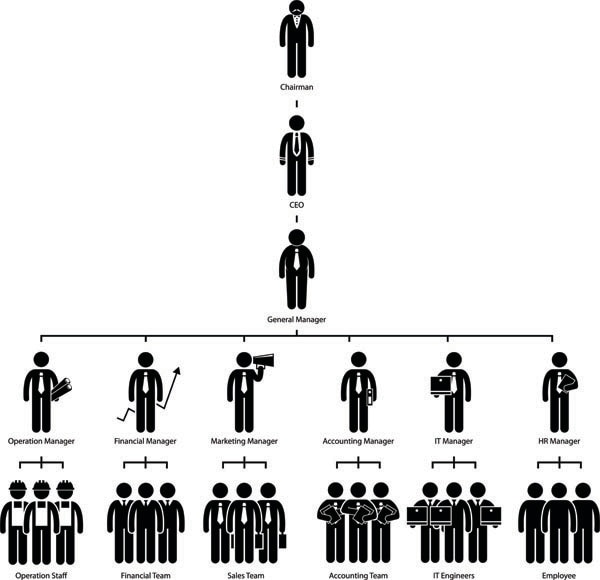Jeffrey Pfeffer: Do Workplace Hierarchies Still Matter?
A professor of organizational behavior says office power dynamics are part of our DNA

Image: Shutterstock
In a world where a junior staffer can tweet to the CEO, the lines that traditionally delineated power and influence have been blurred. So much so, in fact, that when Jeffrey Pfeffer teaches about corporate America’s hierarchical power structure, his students often push back. That model of power isn’t relevant anymore, they insist. Such 20th-century thinking.
Pfeffer’s students are largely millennials — the youngest generation now in the workforce, born between about 1980 and 1992. He says that they, like much of the media, think the traditional power structure in business is changing and that companies are becoming more dynamic and less hierarchical.
They’re wrong. “There’s this belief that we are all living in some postmodernist, egalitarian, merit-based paradise and that everything is different in companies now,” he says. “But in reality, it’s not.” In fact, in a new paper that explores the notion that power structures haven’t changed much over time, Pfeffer explains that the way organizations operate today actually reflects hundreds of years of hierarchical power structures, and remains unchanged because these structures “can be linked to survival advantages” in the workplace. The beliefs and behaviors that go along with them, he writes, are ingrained in our collective, corporate DNA.
Why do traditional power structures have such staying power? One reason is that hierarchies still work. Pfeffer writes that “relationships with bosses still matter for people’s job tenure and opportunities, as do networking skills.” He notes that research shows hierarchies also deliver practical and psychological value, in part by fulfilling deep-seated needs for order and security. Another is that individuals who believe in their own competence and above-average qualities are more likely to take action at work, says Pfeffer. Taking action on the job provides opportunities for success, and success means advancement at the company — including more power and control over others — perpetuating a hierarchical structure.
The hierarchical organizational structure is also rooted in workers’ need to bask in reflected glory and be with the winners. That desire, Pfeffer says, may help explain why people will not only work within the constraints of a traditional power structure but also voluntarily work for difficult bosses. “It may come from the drive to have one’s genetic material survive, which requires being able to first discern and then associate oneself with the individuals and groups most likely to win in fights for survival,” he writes. And power and winning create a self-reinforcing dynamic. Talented people associate themselves with success and attract other talented people to their side, making continued power and success more likely.
Finally, the hierarchical power structure allows workers to manage the cognitive discord that results from trying to reconcile two incompatible ideas at the same time — that a person is successful and powerful yet may also be fundamentally flawed in some ways, like a bad manager. When it comes to power and leadership, we generally presume someone successful has many positive traits, writes Pfeffer, “regardless of whether they actually possess these characteristics.” Accordingly, we “reevaluate the powerful in ways that create or infer positive traits, even if such traits are not real.”
All of these factors contribute to organizational dynamics in the workplace and, ultimately, to its hierarchical power structure. Pfeffer writes that there is “little evidence to suggest that these processes are time or place dependent or that they aren’t reasonable foundations upon which to construct theories of management and organizations.”
Why, then, do so many people hang on the fiction that things are changing? Pfeffer says it’s partly wishful thinking — that as organizations flatten, so will power and influence. The emergence of inexpensive communication technologies, social networking and crowdsourcing has also “increased the tendency to see hierarchy as disappearing and being irrelevant,” he writes.
But no matter what millennials believe, he says, the career game is still played by the old rules and involves making one’s way up the ladder. Relationships with managers still matter when it comes to job tenure and career opportunities. So do networking skills. The fact is that even companies started by millennials ultimately wind up with the same organizational structure around leadership and power. “It’s easy to get diverted by the hype, by what everyone else says is the new world order. But don’t believe you can play the game by different rules,” says Pfeffer. “You can’t.”
Jeffrey Pfeffer is the Thomas D. Dee II Professor of Organizational Behavior at Stanford GSB.
This piece originally appeared in Stanford Business Insights from Stanford Graduate School of Business. To receive business ideas and insights from Stanford GSB click here: (To sign up: https://www.gsb.stanford.edu/insights/about/emails)














